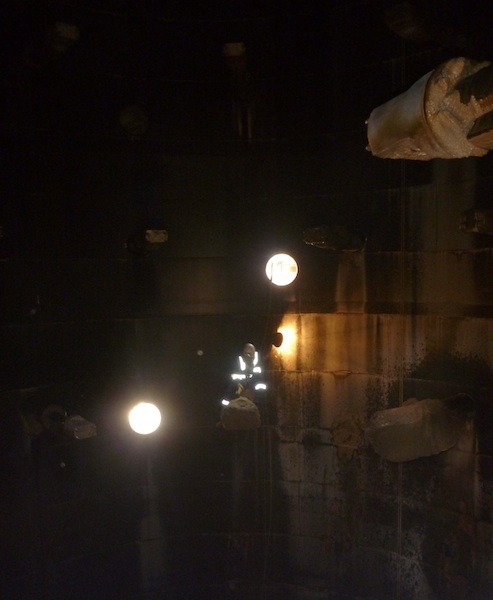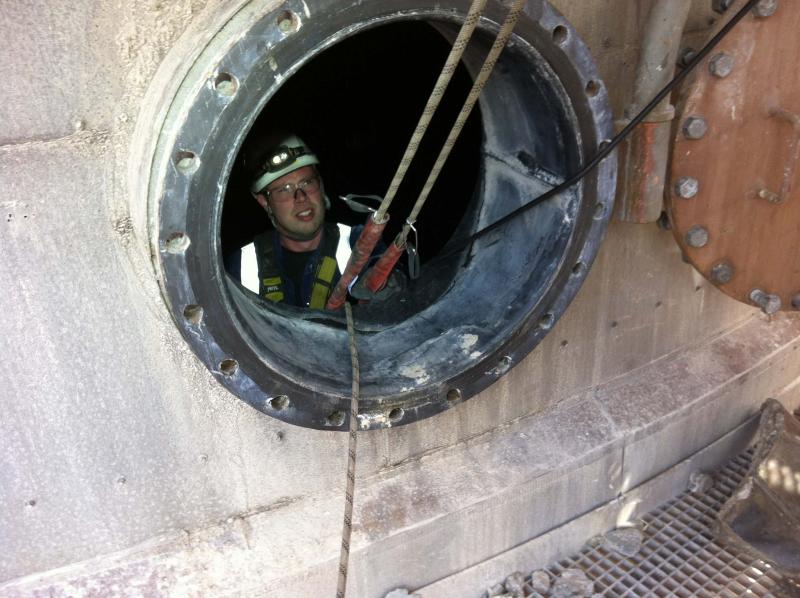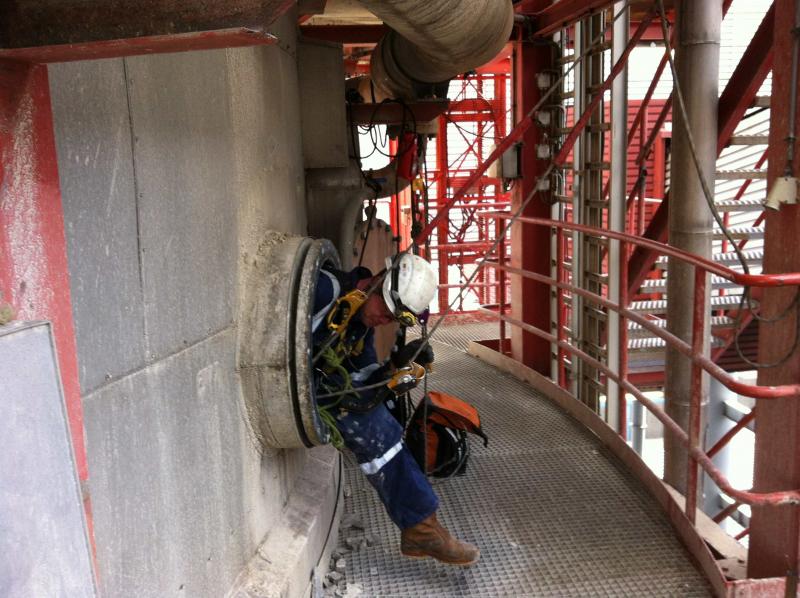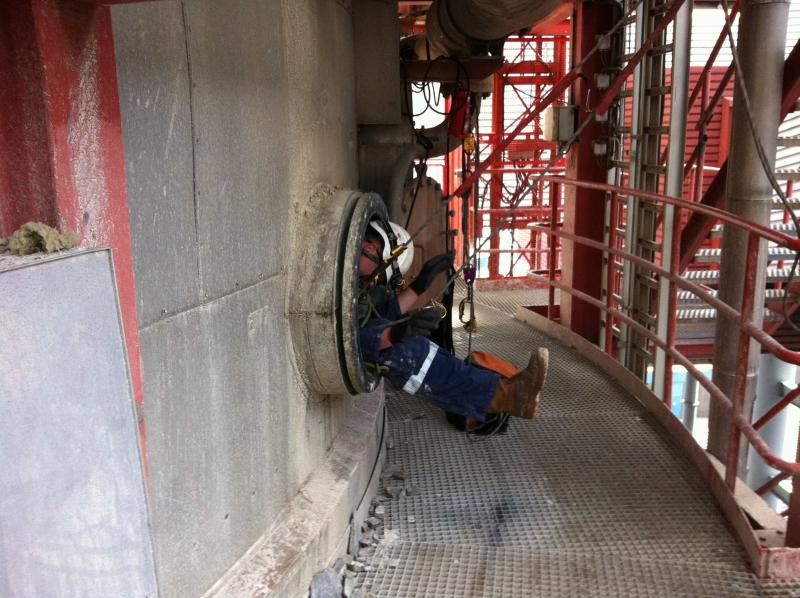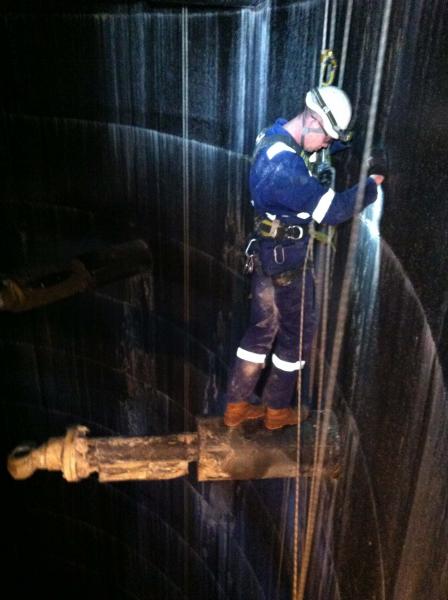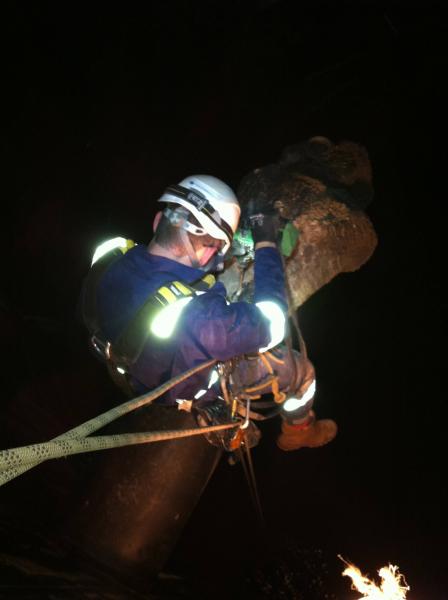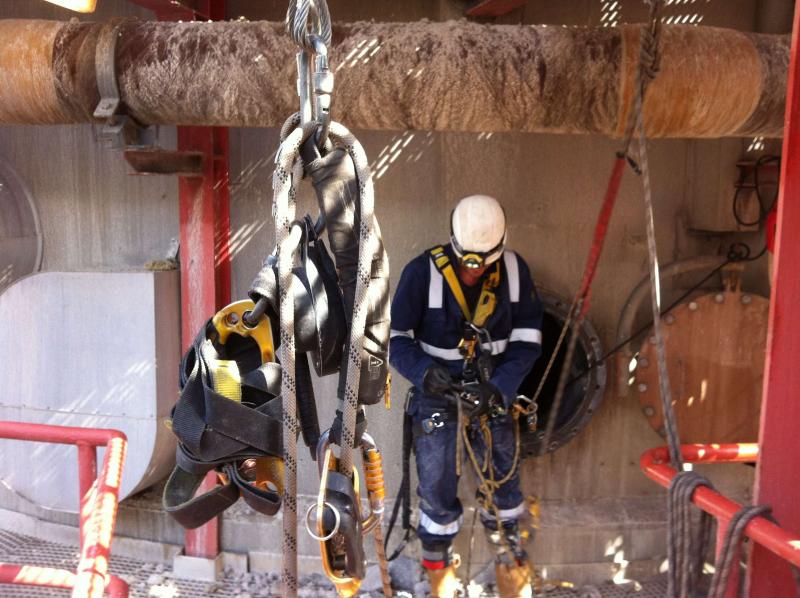Rope Access Group took on a challenging job in a flue gas wash tower of a large power plant.
In the wash tower, flue gases are cleaned using materials such as gypsum and water. Sprayers with ceramic spray nozzles are installed on the walls of the wash tower. These nozzles had become clogged with thick layers of dried gypsum and lime, which needed to be removed.
The job site was a confined space with access only through side openings via manholes. There was also a significant amount of water at the bottom of the tower. The primary challenge here was developing a robust and executable rescue plan. After an intensive risk analysis conducted by us and the client, a comprehensive safety plan was put in place.
Ropes were rigged inside the vessel through manholes located higher up. The entry was made through a lower manhole, and by making multiple rope changes, we were able to reach the spray nozzles. Since the nozzles were coated with a valuable rubber layer that had to remain intact, the use of pneumatic tools was ruled out by the client. This left us with no choice but to carefully remove the buildup by hand.

